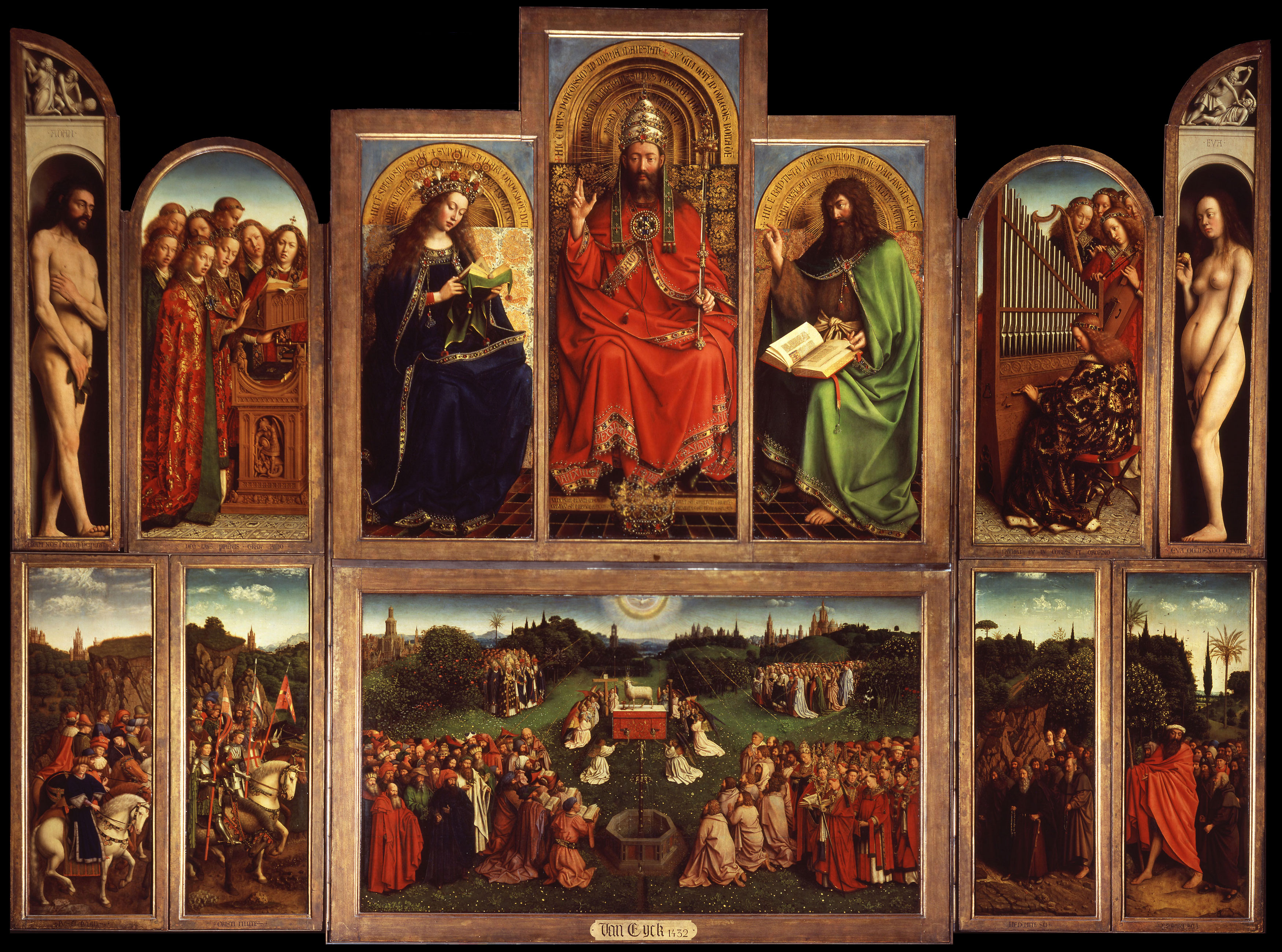
The Ghent Altarpiece: The Adoration of the Mystic Lamb (interior view), painted 1432 by van Eyck

The Ghent Altarpiece: The Adoration of the Mystic Lamb (interior view), painted 1432 by van Eyck
Renaissance art is the painting, sculpture and decorative arts of the period of European history, emerging as a distinct style in Italy in about 1400, in parallel with developments which occurred in philosophy, literature, music, and science. Renaissance art, perceived as the noblest of ancient traditions, took as its foundation the art of Classical antiquity, but transformed that tradition by absorbing recent developments in the art of Northern Europe and by applying contemporary scientific knowledge. Renaissance art, with Renaissance Humanist philosophy, spread throughout Europe, affecting both artists and their patrons with the development of new techniques and new artistic sensibilities. Renaissance art marks the transition of Europe from the medieval period to the Early Modern age.
In many parts of Europe, Early Renaissance art was created in parallel with Late Medieval art. Renaissance art, painting, sculpture, architecture, music, and literature produced during the 14th, 15th, and 16th centuries in Europe under the combined influences of an increased awareness of nature, a revival of classical learning, and a more individualistic view of man. Scholars no longer believe that the Renaissance marked an abrupt break with medieval values, as is suggested by the French word renaissance, literally "rebirth." Rather, historical sources suggest that interest in nature, humanistic learning, and individualism were already present in the late medieval period and became dominant in 15th- and 16th-century Italy concurrently with social and economic changes such as the secularization of daily life, the rise of a rational money-credit economy, and greatly increased social mobility. The influences upon the development of Renaissance men and women in the early 15th century are those that also affected Philosophy, Literature, Architecture, Theology, Science, Government, and other aspects of society.